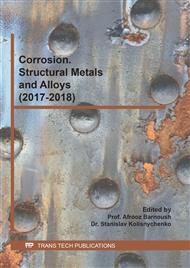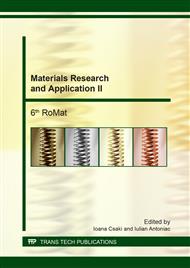p.39
p.45
p.53
p.69
p.75
p.80
p.85
p.91
p.97
Stainless Steels as Erosion Resistant Materials for Hydraulic Machines
Abstract:
The corrosion phenomena lead to serious modifications in the structure of metallic materials from which are manufactured the important active components of hydraulic machines. There are two important types of corrosion: cavitation and silt erosion (abrasive erosion), that are specific to machines which are producing energy [1, 2, 3]. As a corrosion mechanism, in hydrodynamic cavitation [4, 5], when cavitation bubbles implode on the solid surface of hydraulic machine component, the local pressure developed is high and can exceed the fatigue strength, yield point or compression strength of the material. Cavitation phenomenon can be produced in different ways. Four types of cavitation are described in the literature, looking for the method of producing, [6]: hydrodynamic cavitation, particle cavitation, acoustic cavitation, and optic cavitation. Abrasive erosion is the gradual degradation of a structure under the action of solid particles suspended in the working fluid. Impact and sliding erosion are the main categories of abrasive erosion approached in the literature by considering the mechanisms of which the abrasive particles act on the metallic surface, [2]. In the last decades the abrasive erosion phenomenon became a serious problem for the efficient operation of power plants, for instance in hydropower plants [7, 8]. Geothermal energy is the heat energy of the earth given by capturing the springs of heat water. In Romania the geothermal energy is used only for heating because the water has a low temperature and cannot be used to produce electric energy, only heat energy. So, although Romania is the third highest potential geothermal in Europe, practically electric energy from geothermal resource has a low thermal potential, [9]. A steam turbine is working at high rotational speed, high temperatures and using the working fluid which could be steam or wet steam. The working fluid is composed of corrosive chemicals with an aggressive pH. For this reason the common problems of the geothermal steam turbine failures are given by fractures of the blades (rotor blades or stator blades).
Info:
Periodical:
Pages:
75-79
Citation:
Online since:
August 2017
Authors:
Keywords:
Price:
Сopyright:
© 2017 Trans Tech Publications Ltd. All Rights Reserved
Share:
Citation:



